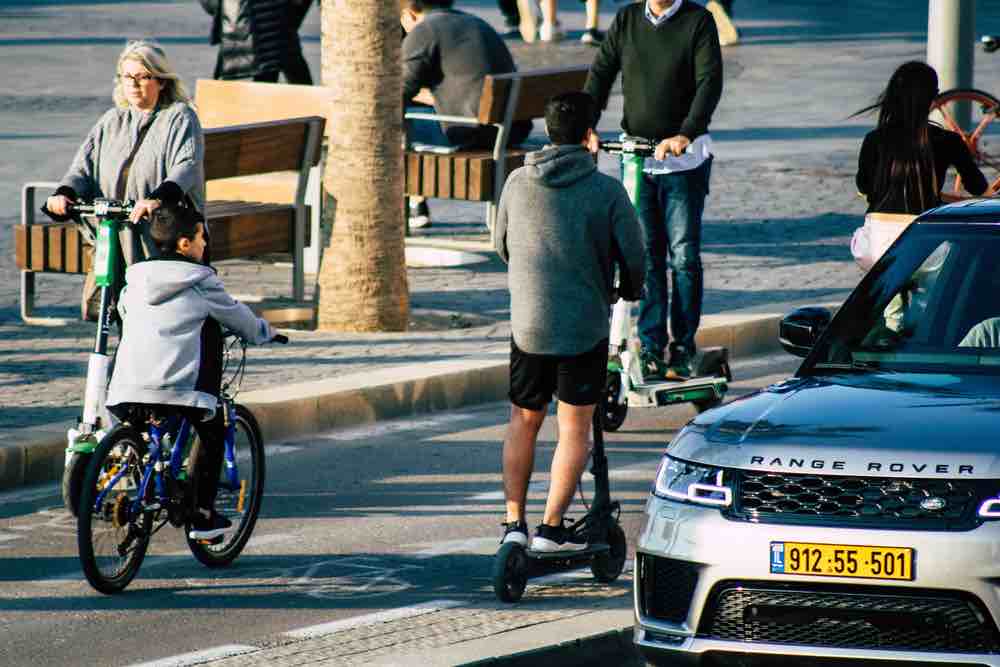Not just sustainability, in the mobility of the future there is intermodality: il relationship between people and vehicles.
 In the mobility of the future there is intermodality: the relationship between people and vehicles, source DepositPhotos
In the mobility of the future there is intermodality: the relationship between people and vehicles, source DepositPhotos
What is intermodality in the mobility of the future
Personalization and possibility of choice among a number of services. Depending on the economic convenience, the situation, the daily habits. Especially the different lifestyles: these are the keywords of mobility of the future.
It’s no mystery, in recent years, even Italians are buying fewer and fewer owned cars. These prefer leaner and less demanding ways of moving.
As the on-demand rental of cars, bicycles and scooters.
But what model of mobility will this change of habits lead to? And how does all this impact on the automotive industry?
Less ownership, more rental but above all sharing
According to an analysis by UNRAE (National Union of Foreign Motor Vehicle Representatives). The private vehicle ownership is declining as car sharing platforms and long-term rental (NLT) increase.
The study also shows that the share of registrations NLT went from 12% in 2015 to 23% of the 2022. And this is confirmed by the market research carried out by ANIAS (National Association of the Car Rental Industry).
It emerges that, while the automotive sector is struggling to return to pre-pandemic levels, with sales still below 10%, the NLT sector is approaching 30% of the vehicle market, with constant growth.
 In the mobility of the future there is intermodality: the relationship between people and vehicles, source DepositPhotos
In the mobility of the future there is intermodality: the relationship between people and vehicles, source DepositPhotos
Italy is the country in second place in the EU for motorization rate
All this generates a new situation for Italy, which is the country in second place in Europe for the highest motorization rate.
After Luxembourg, with 666 cars for every 1,000 inhabitants. As shown by a recent paper by ENEA (National Agency for New Technologies, Energy and Sustainable Economic Development) on mobility and smart working.
Try Revolut, your online account directly from your home. Find out more.
Yet even here, the forecasts are clear. Consumer demand will increasingly move towards services rather than the possession of goods.
The same evidence is also found in the Report di BearingPoint ‘Destination 2030’.
Sharing increases, all factors
This detects a increase in the use of sharing in its various forms. In 2021, only 8% of travel in large cities took place through shared methods.
By 2030, the percentage of shared on demand mobility will rise to 23%. This demand is driven by multiple factors.
In first place the prospect of traveling less. The new habits related to smart working are also complicit. Not 87% of those interviewed are convinced that home-work travel is decreasing compared to 2019.
In second place, the comfort e flexibility. In other words, the fact that the new sharing models allow the end user to reduce the number of “transactions”.
From buying a car, getting insurance, getting gas, servicing, buying or renting a parking space, etc.
Up to simply paying a monthly subscription or a one-off fee at the time of use. Without considering that everything can be managed from the smartphone. In fact, as many as 81% of those interviewed predict that by 2030 they will prefer use one app for all your mobility needs. A further driver important is given by a motivation of impact environmental: 49% say in fact that they will be happy not to own a vehicle if it helps to reduce their environmental footprint. That attention to the environment is becoming an increasingly important issue is also visible in the choices made by Italian users of the NLT: 56% of plug-in hybrid vehicles and 30% of electric vehicles registered in 2022 are in fact absorbed by the rental long-term. This means that almost 4 out of 10 electrified cars sold in our country were registered by rental companies (ANIASA report).
 In the mobility of the future there is intermodality: the relationship between people and vehicles, source DepositPhotos
In the mobility of the future there is intermodality: the relationship between people and vehicles, source DepositPhotos
Intermodal and integrated mobility services: the new business for private and public players
People want to move in a simple, green way, each time using the vehicle that best suits their needs at the moment. The mobility industry is changing its offer to respond to these new habits and anticipate what future evolutions could be: we can say that we are in a phase in which all private and public stakeholders, who are part of the mobility ecosystem, are studying and testing solutions that are useful make the system more integrated it’s easy to be used, both to prevent the evolution of demand, which is more complex every day, and to meet policies that combine safety, well-being and sustainability.
In the unstoppable and increasingly pressing digitization process that sees us constantly connected to the web, it is almost needless to say that the key to success will be access to user data coupled with the ability to interpret them to understand them habits, expectations and anticipate needs as a differentiating factor from the competition. The growth of personalization and on-demand services in fact means that the various players on the market will have to compete, after acquiring and analyzing user data, to generate coherent answers to emerging questions and stimulate new ones.
All of this is already impacting the various players in the automotive and mobility services supply chain, generating new business models by all players in the automotive sector supply chain and mobility in general: from car manufacturers to supplier manufacturing companies, from companies that provide intermodal transport services, to public agencies, from energy distributors to insurance companies.
For example, with a view to having greater and more continuous access to vehicle user data, car manufacturers are moving towards disintermediate the relationship with end customers (dealer agency model). At the same time, with a view to maintaining a direct link also with that segment of customers who prefer the forms of rental or sharing, all car manufacturers are investing in their rental companies with the creation of new mobility brands.
Players from the automotive and mobility sectors who want to remain relevant in the market need to expand their offer in multi-service and intermodal opticsnot so much by operating autonomously in all areas, but more orchestrating an ecosystem of partners and adopting quickly new technologies in order to present to the users of tomorrow a mobility experience accompanied by multiple useful services (detection of free parking spaces, identification of charging points, intermodality of payment, autonomous driving, etc.).
A sector that has considered the car as a primary good since the beginning of the 1900s is therefore called a change skin by reviewing the value chain to give centrality to services linked to an intermodal, integrated, shared, but still highly personalized mobility. The path will not be easy, it implies having to introduce the players in the automotive supply chain new professionsdrawing from other sectors such as telecommunications, also implies reinvent customer touchpoints and know how to read and interpret the immense amount of data that they will be able to collect from their customers. A complex but achievable evolution and above all essential to remain on the market profitably.
















Leave a Reply
View Comments